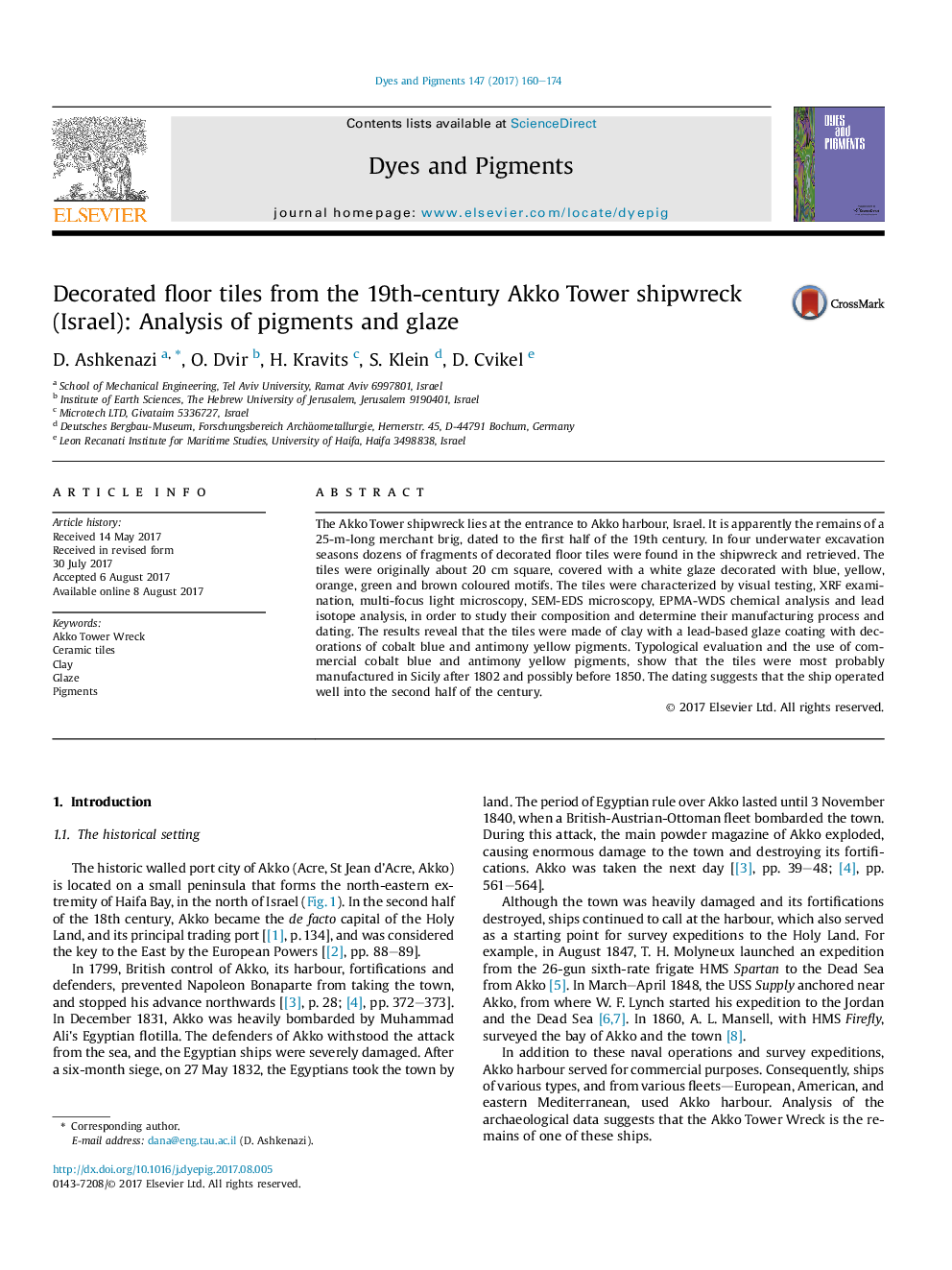| Article ID | Journal | Published Year | Pages | File Type |
|---|---|---|---|---|
| 4765652 | Dyes and Pigments | 2017 | 15 Pages |
â¢Decorated glazed tiles were retrieved from the 19th century Akko Tower shipwreck.â¢The tiles were made of clay with lead-based glaze.â¢Characterization of the clay, glaze and pigments of the tiles was performed.â¢Commercial cobalt blue and antimony yellow pigments were used.â¢The tiles were probably manufactured in Sicily after 1802 and possibly before 1850.
The Akko Tower shipwreck lies at the entrance to Akko harbour, Israel. It is apparently the remains of a 25-m-long merchant brig, dated to the first half of the 19th century. In four underwater excavation seasons dozens of fragments of decorated floor tiles were found in the shipwreck and retrieved. The tiles were originally about 20Â cm square, covered with a white glaze decorated with blue, yellow, orange, green and brown coloured motifs. The tiles were characterized by visual testing, XRF examination, multi-focus light microscopy, SEM-EDS microscopy, EPMA-WDS chemical analysis and lead isotope analysis, in order to study their composition and determine their manufacturing process and dating. The results reveal that the tiles were made of clay with a lead-based glaze coating with decorations of cobalt blue and antimony yellow pigments. Typological evaluation and the use of commercial cobalt blue and antimony yellow pigments, show that the tiles were most probably manufactured in Sicily after 1802 and possibly before 1850. The dating suggests that the ship operated well into the second half of the century.
